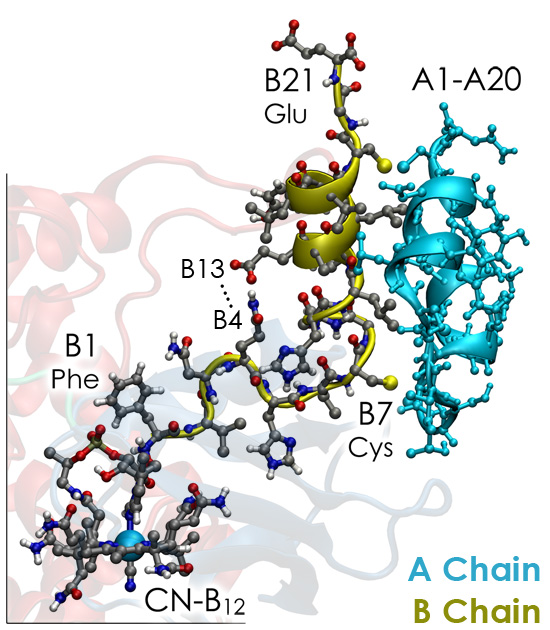#50, published in ChemMedChem (11 (2016), 9, 1015-1020), DOI:cmdc.201600073.
The key to molecular dynamics simulations is recycling – specifically, going into a first project with enough organization to know how to use everything in the next study. While that first successful connectivity table, parameter assignment, and RESP charge generation for something as Frankenstein-esque as vitamin B12 is the north face of Everest, that next simulation is simply a matter of having atom codes in your PDB file standardized.
And, speaking of PDBs, article #50 has the added bonus of having its own entry in the Protein Databank as 2NA5 – quite a treat (to me, anyway).
And furthermore, this is the first of my publications to benefit from the Research Computing infrastructure on the Syracuse University campus – the throughput of calculations for future work is completely unprecedented in my history of resource access anywhere (the drop in storage prices is very real to some of us).

Authors: Henry K.E., Kerwood D.J., Allis D.G., Workinger J.L., Bonaccorso R.L., Holz G.G., Roth C.L., Zubieta J., and Doyle R.P.
Abstract: Vitamin B12-peptide conjugates have considerable therapeutic potential through improved pharmacokinetic and/or pharmacodynamic properties imparted on the peptide upon covalent attachment to vitamin B12 (B12). There remains a lack of structural studies investigating the effects of B12 conjugation on peptide secondary structure. Determining the solution structure of a B12-peptide conjugate or conjugates and measuring functions of the conjugate(s) at the target peptide receptor may offer considerable insight concerning the future design of fully optimized conjugates. This methodology is especially useful in tandem with constrained molecular dynamics (MD) studies, such that predictions may be made about conjugates not yet synthesized. Focusing on two B12 conjugates of the anorectic peptide PYY(3-36), one of which was previously demonstrated to have improved food intake reduction compared with PYY(3-36), we performed NMR structural analyses and used the information to conduct MD simulations. The study provides rare structural insight into vitamin B12 conjugates and validates the fact that B12 can be conjugated to a peptide without markedly affecting peptide secondary structure.
